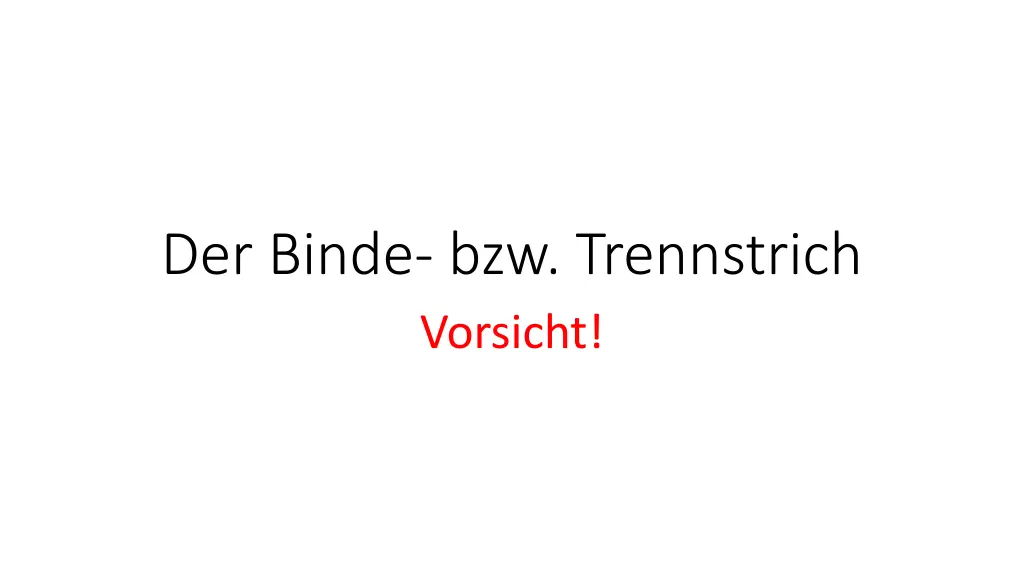
Understanding the Usage of Hyphens and Dashes in German Compound Words
Discover the intricacies of using hyphens and dashes in German compound words through examples and explanations. Learn when to apply them and when they are unnecessary to ensure clarity in writing.
Download Presentation

Please find below an Image/Link to download the presentation.
The content on the website is provided AS IS for your information and personal use only. It may not be sold, licensed, or shared on other websites without obtaining consent from the author. If you encounter any issues during the download, it is possible that the publisher has removed the file from their server.
You are allowed to download the files provided on this website for personal or commercial use, subject to the condition that they are used lawfully. All files are the property of their respective owners.
The content on the website is provided AS IS for your information and personal use only. It may not be sold, licensed, or shared on other websites without obtaining consent from the author.
E N D
Presentation Transcript
Der Binde- bzw. Trennstrich Vorsicht!
Vorbemerkung: Zusammengesetzte Wrter Die mag das Deutsche: Donaudampfschiffahrtskapit nsjackenknopfdosenfabrikant, der Der vordere Teil bestimmt gew hnlich den n chsten: H hnerd ner Kinderd ner (Welcher ist zarter?) Sowas schreibt das Dt. in einem Wort: K chenchef Frz.: chef de cuisine
Komposita mit Trennstrich, nur unter drei Bedingungen: Hochzeit vs. Hoch-Zeit begreifen vs. be-greifen 1. Wenn eine Kombination anders als blich verstanden werden soll! Das ist das Risiko. FJ: Kaiser-K nig (Kaiser v. sterreich und K nig v. Ungarn / B hmen) Ein blau-rotes Hemd ist zweifarbig, ein blaurotes ist in bl ulichem Rot. 2. Wenn beide Teile zugleich vorliegen! Bierglas vs. Latte-macchiato-Glas 400-Meter-Lauf Die / das E-Mail 3. Wenn sich mindestens ein Teil nicht an die dt. Rechtschreibung h lt!
Bindestriche sind zuweilen unntig: Vgl.: Rindfleisch, Rinderrouladen, Rindswurst Bei Rindfleisch stehen beide Teile nebeneinander. Bei Rinderrouladen haben wir einen Pseudoplural. Bei Rindswurst / Liebesdienst haben wir ein Fugen-s . Bei den beiden letzten braucht man nicht noch zus tzlich einen Strich. Und wann setzt man denn gerne einen Bindestrich? Wenn die W rter zu un bersichtlich werden! Mein Tipp: Wortf nfmaster meiden!
